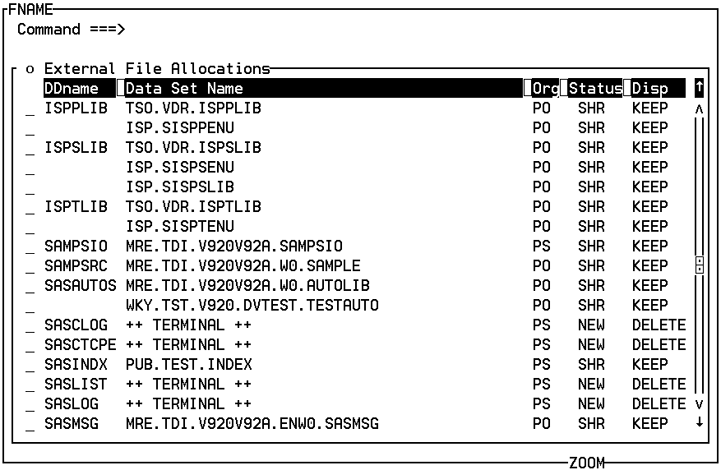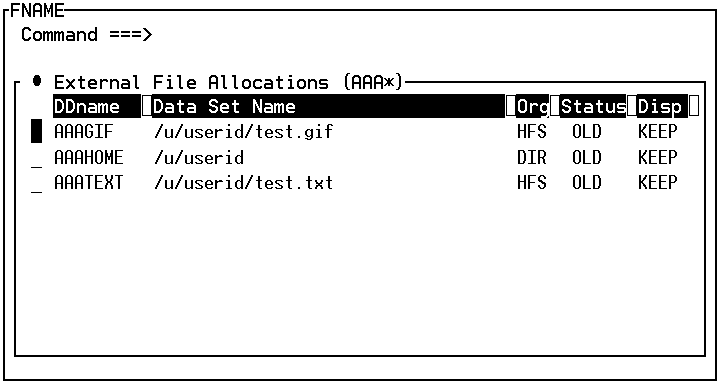FNAME Window
Displays allocated ddnames, their associated data
set names, and data set information.
| z/OS specifics: | All |
Details
You can invoke
the FNAME window from any window in the windowing
environment, including the windows in SAS/FSP and SAS/AF. To invoke
it, type FNAME.
The FNAME window
displays ddnames that are currently allocated to the operating system
and the data sets or UFS files that are associated with each ddname.
These ddnames might include some files that are necessary for TSO
or for initializing the SAS system. Typically, UFS files or SAS libraries
are not allocated to the operating system by SAS. These files are
not displayed in the FNAME window, unless
an external allocation is provided with the TSO ALLOC command that
specifies the PATH operand.
If you do not supply
the optional ddname, then the FNAME window
displays all ddnames that are associated with your TSO login session
and your SAS session. It also displays the names of the physical files
that are associated with them. If you supply a ddname, it can be
either a specific name or a prefix. For example, to see only ddnames
that begin with the letter A, you can use either of the following
prefixes as the specifications:
Some
libraries and external files that are currently assigned by SAS might
not be allocated to a ddname. To see a list of all external files
currently assigned by SAS, use the syntax shown in FILENAME Window. To see
a list of all libraries that are currently assigned by SAS, use the
syntax shown in LIBNAME Window.
If you attempt to browse
or edit a file that is not a text file, then the SAS editor detects
any non-printable bytes that might be present. It then asks whether
you want them to be treated as text attribute bytes. You can treat
these bytes as text attributes or stop opening the file. If you elect
to treat them as text attributes, SAS opens the file and attempts
to display the contents of the file as normal text characters whose
appearance is modified by the presumed text attribute bytes. Although
SAS is able to open the file, if the file is not a text file with
embedded text attribute bytes, then the data appears as random normal
text characters with random colors and highlighting. If you elect
to stop opening the file, SAS returns to the FNAME window.
In the FNAME window
that you can perform various tasks by entering one of the following
selection-field commands:
lists the members in
a concatenation of PDSs. C must be specified on the first line of
a concatenation. That is, the ddname cannot be blank. C does not work
if the concatenation contains a USS file.

